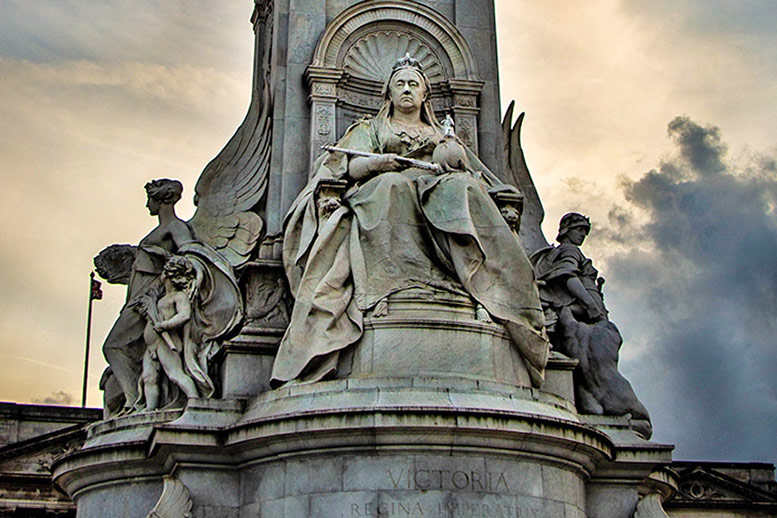
The History of London
Study the past if you would define the future – Confucius
When you think of London, you might think of the booming metropolis it is today, the magnificent sights, the gorgeous places to dine and its lush inner-city green spaces. However, London is one of the oldest cities on earth and is shrouded in mystery and legend. Here we will briefly summarise London's history and the historical events which occurred in this marvellous place. So let's delve into this ancient pool of London history knowledge and discover the hidden facets of such an esteemed and popular city.
Covering the entire history of London is an arduous task indeed, which requires much research and lots of writing, but we aim to cover a brief history of London and many major events that have taken place in this amazing city in a nutshell.
Since London is the capital, it will become apparent that it plays a major role in most events in the history of the entire country and even around the world, so discussing political decisions and events in faraway places isn’t a digression from the topic, as the decisions came from the ultimate seat of power in England: London.
London’s Legendary Beginnings
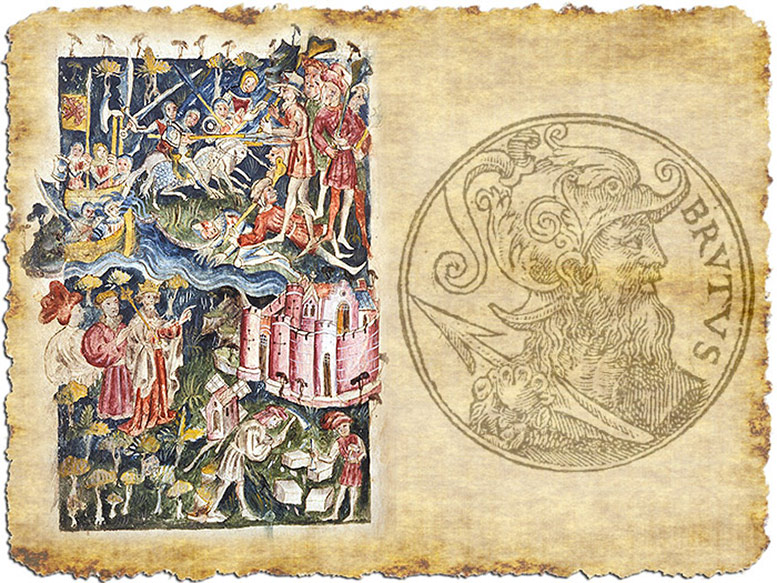
Although it is widely known that London was originally built by the Romans, legend dictates that the city was founded on the banks of the River Thames by Brutus of Troy after he defeated Gog Magog; ancient giants who were residents on the island in around 1000 BCE. He called the city New Troy (Caer Troia or Troia Nova) but the name soon changed to Trinovantum, and the tribe that existed around the River Thames in the Iron Age were the Trinovantes.
Legend has it that Britain was named after Brutus of Troy who became its first King. He ruled for twenty-four years and after his death, the island was split between his three sons; Locrinus, who took over England, Albanactus; who took over Scotland and Camber; who took over Wales.
Roman London (43 – 410 AD)
The Roman conquest of Britain, which began in 43 AD, took a while and many battles were fought by the Roman legions against the native Celtic tribes. In 47 AD the small civilian town of Londinium was built by the Romans and was very small, equivalent to the size of Hyde Park today.
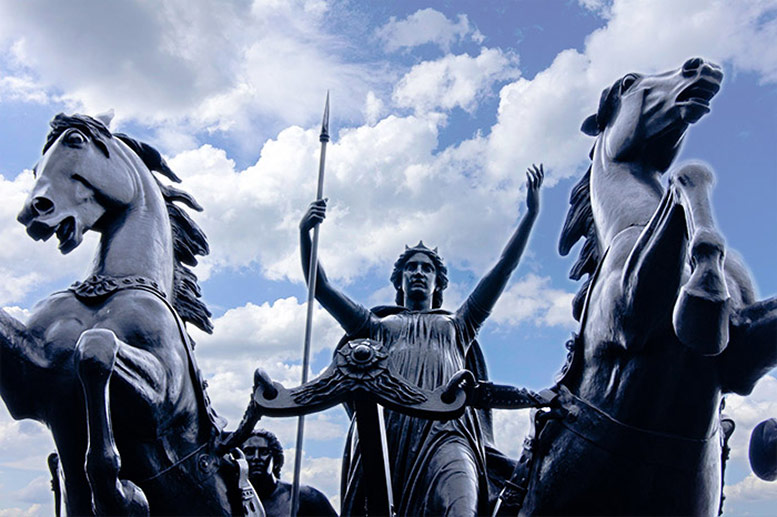
Londinium was destroyed in 60 AD following a revolt led by Queen Boudicca and her tribe, the Iceni, but was then rebuilt after her defeat and death. She was said to have poisoned herself before losing the battle to avoid being captured. The town then rapidly grew under Roman administration, there were approximately 60,000 inhabitants and IT became the capital of Britannia replacing Colchester.
The Romans improved infrastructure in the town and built bathhouses and temples, Londinium even had its amphitheatre and basilica, a building where the Romans held court meetings. The garrison of Londinium was stationed in a large fort making it a highly tenable position should the natives try to ransack it again.
The Romans then built the London Wall sometime around 180 – 225 AD which survived for 1,600 years; they didn’t want to repeat the disaster caused by Boudicca. In the 3rd century, Londinium was raided several times by Saxon pirates resulting in the Romans building even more defensive structures including a riverside wall.
The 5th century saw the decline of the Roman Empire as a whole, this led to Britannia being abandoned by the Romans and Londinium became derelict as it was considered a far-flung place and not worth spending resources and military power on when there were much greater problems closer to Rome itself.
Anglo-Saxon London (5th century - 1066)
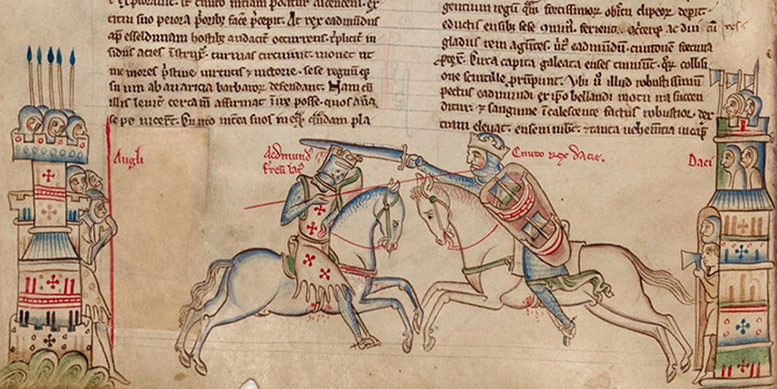
When the Romans left Britannia, settlers from Germany, Denmark and the Netherlands arrived in search of a new homeland; these people formed the Anglo-Saxon Heptarchy. The Heptarchy consisted of seven kingdoms: East Anglia, Essex, Kent, Mercia, Northumbria, Sussex, and Wessex. The Anglo-Saxon settlement located close to the former town of Londinium was called Lundenwic and was disputed between the kingdoms of Mercia and Wessex in 796. Archaeologists found it hard to find where Anglo-Saxon London was located, recent discoveries, such as the cemetery in Covent Garden, show that it was much closer to modern London than they originally thought, perhaps even in the same boundaries but smaller in size of course. The area surrounding the River Thames is a strategic location so it is of no surprise that it didn’t stay abandoned for long after the Romans left and it became a trading hot spot.
In 871 the Great Heathen Army of the Vikings invaded, they overran most of England and reached Lundenwic, camping at the site where the old Roman wall was, the majority of the population then moved to the former Londinium and formed a new settlement called Lundenburg. Winchester was the capital of England until Æthelred the Unready made London his capital in 978. The Anglo-Saxon King, Alfred the Great took control of Lundenburg and renewed its fortifications, this was useful because in 996, Sweyn Forkbeard, the King of Denmark, attacked the city but was defeated. Lundenwic was mostly abandoned and renamed Ealdwic, today it is called Aldwych.
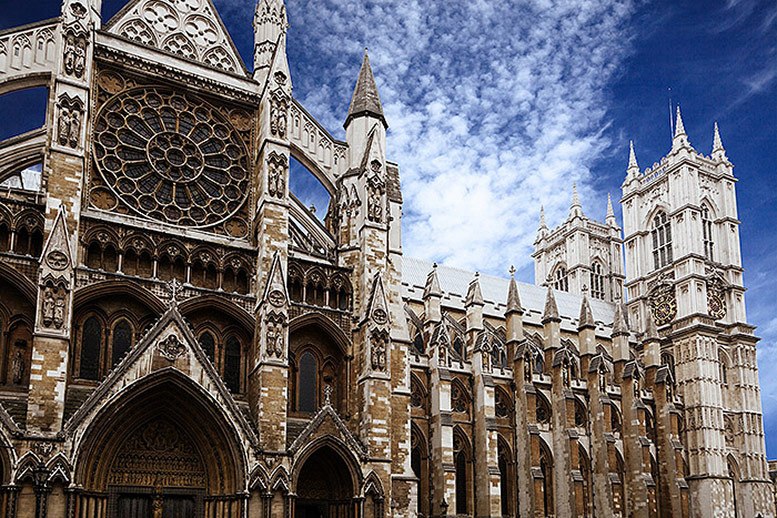
In 1016 however, Sweyn Forkbeard’s son, Cnut the Great conquered Lundenburg and the rest of England. Cnut’s stepson, the famed Edward the Confessor became the King in 1042 and built Westminster Abbey and the first Palace of Westminster which is now known as the Houses of Parliament. When Edward the Confessor died in 1066, Duke William of Normandy claimed the English throne but Edwards’s brother-in-law, Harold Godwinson was crowned King of the Anglo-Saxons thus provoking William to invade.
Norman and Medieval London (1066 - 15th century)
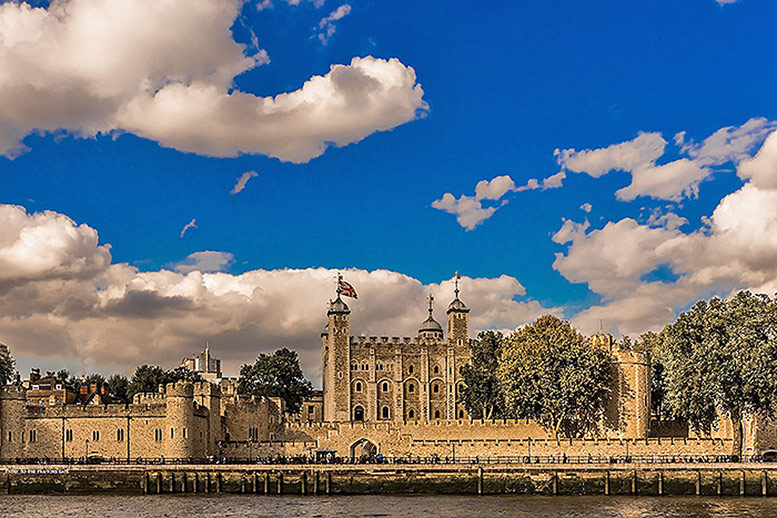
William of Normandy defeated Harold Godwinson at the Battle of Hastings in 1066 and became King of England, he then became known as William the Conqueror. To subdue London’s population, William built several forts, the most famous of these survives today and is the Tower of London, it was the first stone castle in England.
1097 saw the construction of the Westminster Hall by William Rufus, William the Conqueror’s son. The only bridge to cross the River Thames until 1739 was the London Bridge construction began in 1176 and was completed in 1209.

In 1216, Louis of France was crowned King of England during the First Barons’ War when the rebel forces pledged allegiance to him against King John. When John died, however, the rebels began to support his son Henry III and Louis withdrew from England. During these years there were several violent acts committed against London’s Jewish population and ended with them being exiled from the city by Edward I in 1290.
Despite strong cultural and linguistic influences, the development of early modern English allowed the population to form a separate culture that would eventually set the English culture apart from French culture in the coming medieval period. Due to the increase of trade in the Middle Ages, London rapidly grew due to its location on the River Thames being ideal for commerce.
The population of London grew rapidly, in 1100, around 15,000 people were living in the city but by 1300, it had grown to roughly 80,000 inhabitants. In London, trade was administered by guilds that managed the city as they were also the ones who elected the Lord Mayor of the City of London.
Norman London was a very different place from modern London, most of the buildings were made from timber or straw and the streets were very narrow, this combination made it extremely vulnerable to deadly fires and if not put out could potentially destroy the whole city.
The Knights Templar, who played a part in the Crusades, actually had their base in London from 1185 up until their dissolution in 1312 after they were charged with devil-worshipping. There are a few buildings, located in Temple, which can be visited today such as Middle Temple Hall, Inner Temple Hall, Temple Church and a few dormitories. The Middle Temple and Inner Temple Inns of Court are also based here (all barristers have to belong to one of the four Inns of Court; two of them are former Knights Templar buildings).
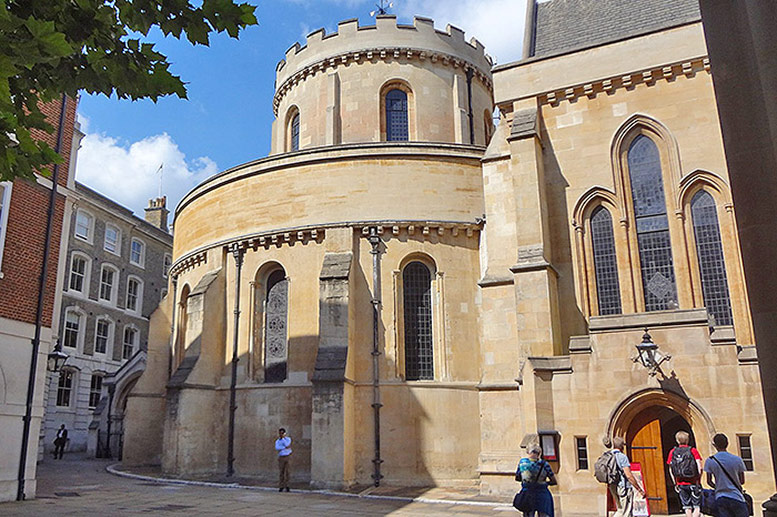
During the 14th century, London lost more than half of its population due to the Black Death, a plague that was carried by fleas living on rats that came from trading ships. Despite this, London’s economy made a swift recovery and was soon operating as normal.
In 1475, a merchant guild from Central Europe known as the Hanseatic League set up its base in London known as the Steelyard; it was from here that woollen cloth was shipped to the Netherlands where it was much sought after ultimately boosting London’s economy.
Tudor London (1485 - 1603)
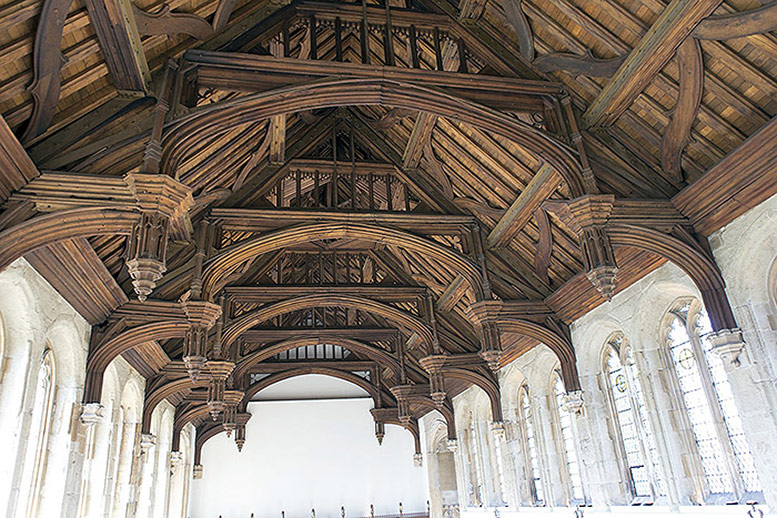
In 1485, Henry Tudor became King of England as Henry VII; he also put an end to the bloody Wars of the Roses by marrying Elizabeth of York (the Wars of the Roses were fought between the House of Lancaster, whose emblem was a red rose, and the House of York, their emblem being a white rose; they were civil wars for the English throne). This marked the beginning of the Tudor period.
When the second Tudor monarch, Henry VIII, came to power in 1491, there were some major changes in London as well as England as a whole through the significant event known as the English Reformation.
London nearly came under attack in 1497 when Perkin Warbeck, a pretender to the throne, camped outside the city with his band of followers. The King took swift action, however, and Warbeck was caught and hung.
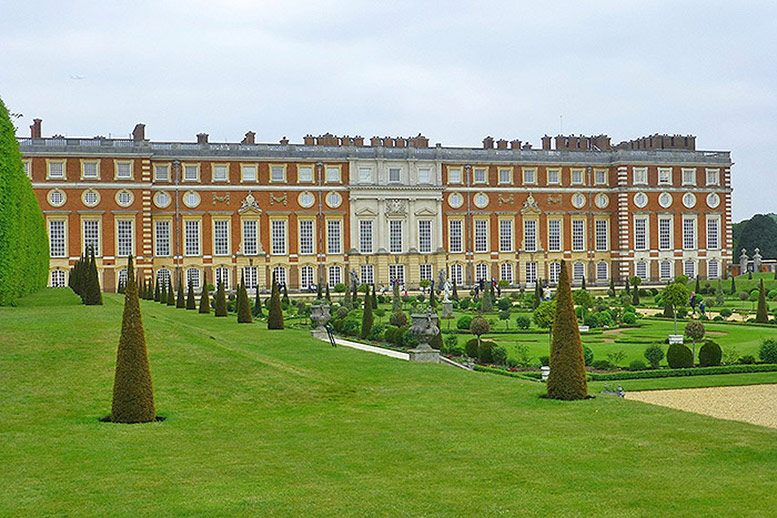
In 1515, Hampton Court Palace was built by the order of King Henry VIII for Cardinal Thomas Wolsey, who was a personal favourite of the King at the time.
The English Reformation is the name given to the changes and events that took place in the country after the Church of England broke away from the Roman Catholic Church and the authority of the Pope. It is often believed that Henry VIII was provoked to make these changes after Pope Clement VII decided not to allow his annulment with Catherine of Aragon in 1534. Henry VIII then declared himself “Supreme Head on Earth of the Church of England” and the country then became largely Protestant. (An interesting point to note is that even though Henry VIII annulled his marriage to Catherine so he could marry Anne Boleyn when Anne couldn’t give him a son, he had her beheaded after just three years!)
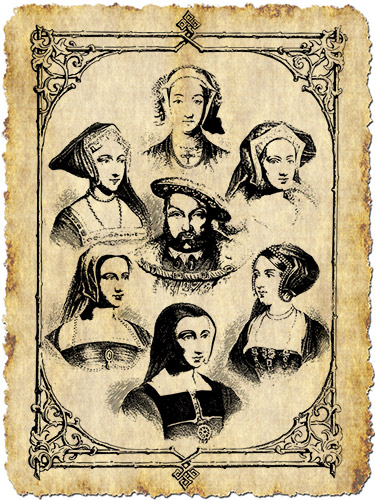
More than half of the properties in London at the time were monasteries and nunneries, and over a third of the inhabitants were monks and nuns; the Reformation affected them terribly as all these properties were seized by the King and other nobles. This was known as the Dissolution of the Monasteries and even once-powerful individuals, like Thomas Wolsey, (as he was a cardinal of the Catholic Church) had their houses seized and converted into whatever their new owners saw fit; Henry VIII converted the lands surrounding Westminster Abbey, Hyde Park and St. James's Park all into deer parks for his entertainment. St. Bartholomew’s Hospital, which is still there today, was reopened by the King as it had been operating without that name and pay during the Dissolution.
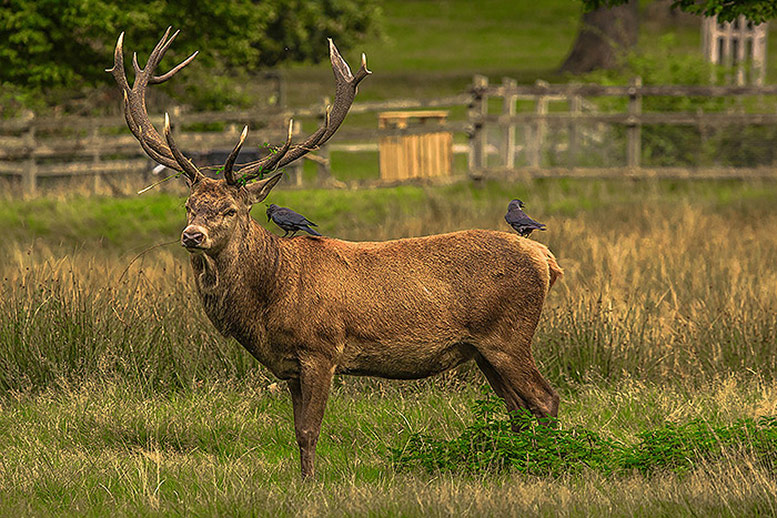
When Henry VIII died in 1547, most of the seized buildings that were left empty were handed over to the City Livery Companies to make up for crown debts by his son Edward VI. The City Livery Companies were a collection of guilds and trade associations that used some of the newly gained property in ways that were helpful to the public; the former St. Thomas’ monastery was converted into St. Thomas’ Hospital and Bridewell Palace was converted into a children’s home.
In 1553, Edward VI died and Mary I became queen. In between Edwards’s death and Mary coming to the throne, Lady Jane Grey reigned for just nine days but was removed by Mary who had her beheaded. When Mary decided to marry Philip II of Spain, there was an uprising led by Sir Thomas Wyatt who took control of Southwark, he then moved through Charing Cross, Westminster and then reached Ludgate, however his lack of supporters in the City of London, forced him to surrender in 1554. Mary I tried to reverse the Reformation and executed Protestants by burning them at the stake and for this, she was known as “Bloody Mary”. She returned England to Roman Catholicism, a process that just added more chaos to the discord caused by the English Reformation.
In 1558, Elizabeth I, who was the daughter of Henry VIII and Anne Boleyn, became the queen and brought the country into what historians like to call the golden age of English history and the peak of the English Renaissance. She was the last of the five Tudor monarchs.
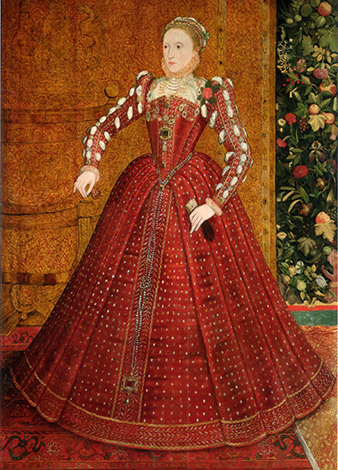
Queen Elizabeth loved watching plays and many theatres were built during her reign, her advisors feared, however, that the crowds that the theatres attracted could turn into mobs so most of them were built in the city boundaries. Theatres built in London during the Elizabethan era include The Globe, The Rose, The Swan, The Hope, The Blackfriars Theatre, The Theatre and The Curtain. It was at this time, during the 16th century, that William Shakespeare lived and worked in London. It was these forms of entertainment that had a massive impact on English culture.
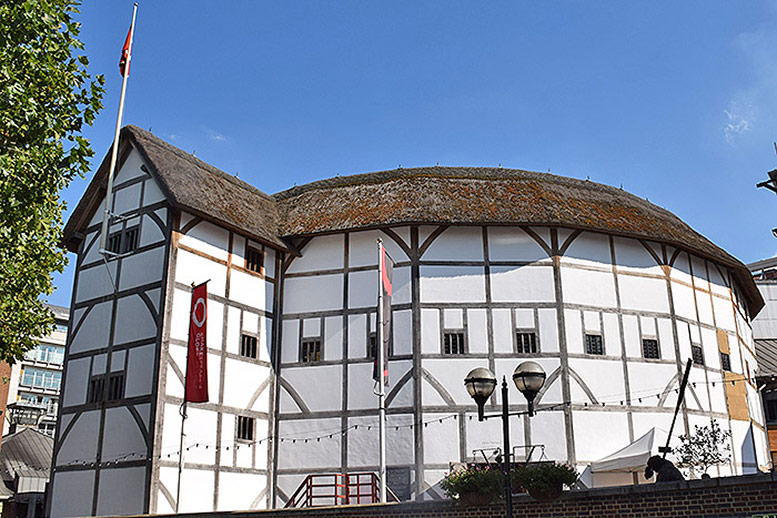
William Shakespeare is regarded as the national poet of England, and is one of the most famous playwrights and poets in the world; his works are studied in English schools and Universities. The Globe Theatre, which is located in the London Borough of Southwark, was built by Shakespeare’s playing company known as the Lord Chamberlain’s Men in 1599. The Globe Theatre was destroyed by fire in 1613 but was rebuilt on the same site in 1614. (The Globe is still there today and can be visited).
Elizabethan London was a lot different from modern London, although it was much more built-up than in previous eras, there were still some surprising contrasts; Covent Garden was a market garden, Islington and Hoxton were just villages and areas like Holborn and Bloomsbury had hospitals built there due to the fine country air.
Earthquakes in England are rare but in 1580 there was one known as the Dover Straits Earthquake, which affected France, England and Scotland. In London, many chimney stacks and parts of Westminster Abbey were destroyed; falling stones also killed two children. The Puritans, who were a group of Protestants, blamed the emergence of theatres for the earthquake as they were opposed to it all along declaring them “the work of the devil”.
The Tudor period saw London expand into a large trading city, one of the most important in Europe; trade from London went all the way to the Americas, Russia and the Levant (modern-day Syria, Palestine and surrounding areas).
Stuart London (1603 - 1714)
After the death of Queen Elizabeth I in 1603, James I became King of England starting the Stuart period, James I was already the King of Scotland, as James VI, before becoming the King of both countries after the Union of the Crowns which put England, Ireland and Scotland under the ownership of a single monarch.
In 1605, the famous Gunpowder Plot took place where a Catholic group led by Robert Catesby, including the notorious Guy Fawkes, attempted to blow up the House of Lords. The plan failed as it was discovered by the King and the conspirators were executed; this event is remembered by celebrating Bonfire Night, also known as Guy Fawkes Night, on the 5th of November every year where people set off fireworks and light bonfires.
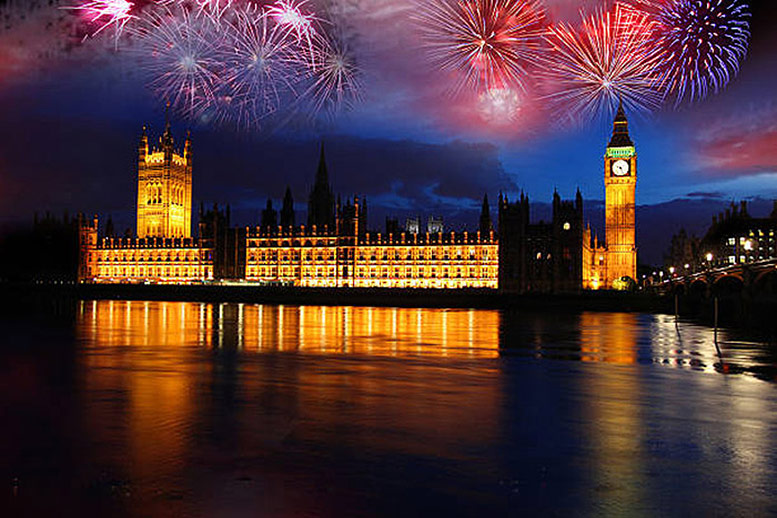
During James’ reign, the Lord Mayor’s Show was brought back in 1609, and is still implemented today, to celebrate the appointment of a new mayor of London; it is an annual event with a new mayor being chosen every year.
In 1611, a businessman named Thomas Sutton had purchased the dissolved monastery of the Charterhouse and it was converted into a hospital, chapel and medical school.
When Charles I came to power in 1625, many rich people and aristocrats began to buy properties in the West End of London; due to the rich social life in the rapidly growing city, it became a place where some people, who could afford it, spent a part of the year in London.
London also played a part in the English Civil War of 1642, which lasted until 1651, fought between the Parliamentarians who didn’t support the King and the Royalists who did (the belligerents are also known as the “Roundheads” and “Cavaliers”).
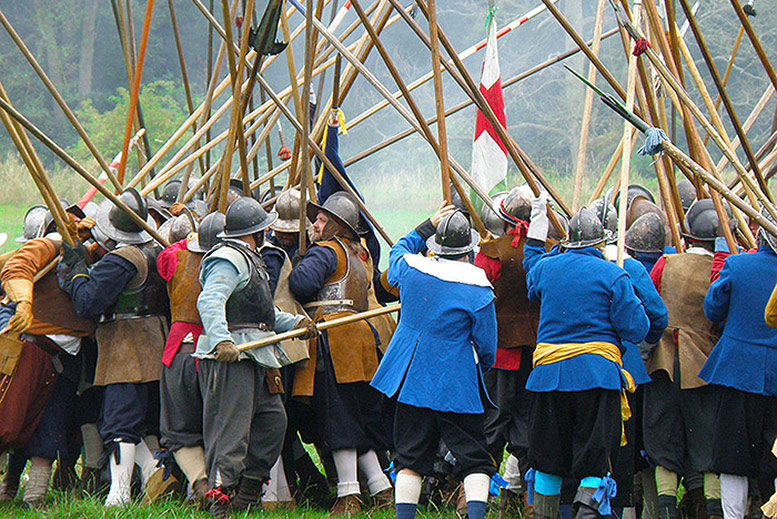
The Battle of Brentford in 1642 was fought a few miles away from London and many defences and bastions were built in the areas of Westminster and Southwark, deterring attacks from the Royalists. It was the extensive funding from London that contributed to the Parliamentarian victory.
The Royalists were defeated and King Charles was executed in 1649; Oliver Cromwell came to power and founded the Commonwealth, where England, Ireland, Scotland and Wales were governed as a republic. Oliver Cromwell wasn’t a King and instead had the title of “Lord Protector of the Commonwealth of England”.
After 365 years of banishment, Oliver Cromwell allowed the Jews to return to London in 1655, their first Synagogue was built in 1657 at Creechurch Lane.
In 1658, after Oliver Cromwell’s death, his son Richard Cromwell took over the Commonwealth but was unable to manage it properly and lost the support of the army. His failure led to the monarchy being restored under Charles II in 1660.
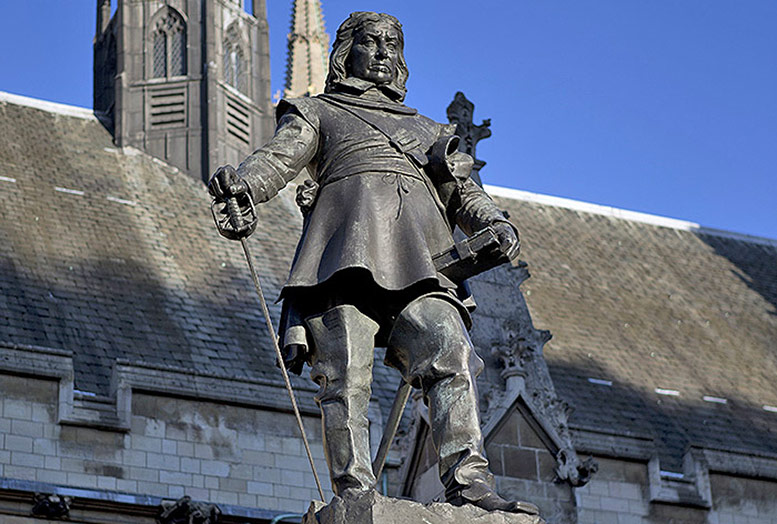
During the 17th century, the over-cramped conditions of London at the time weren’t the safest place to live and there was an extreme lack of sanitation. Over the years there had been several plagues that affected London but the eighth and last one was known as the “Great Plague” and brought very terrible times upon the city’s inhabitants.
The plague first started in the Netherlands in 1663 so shipping from there was banned officially, however, illegal shipping continued and the plague reached the coastal town of Yarmouth. When the disaster reached London, Charles II, his court, and other rich residents fled the city to areas where the plague had not affected. By 1666, it is estimated that there were more than 100,000 deaths in London alone, more than a quarter of the population.
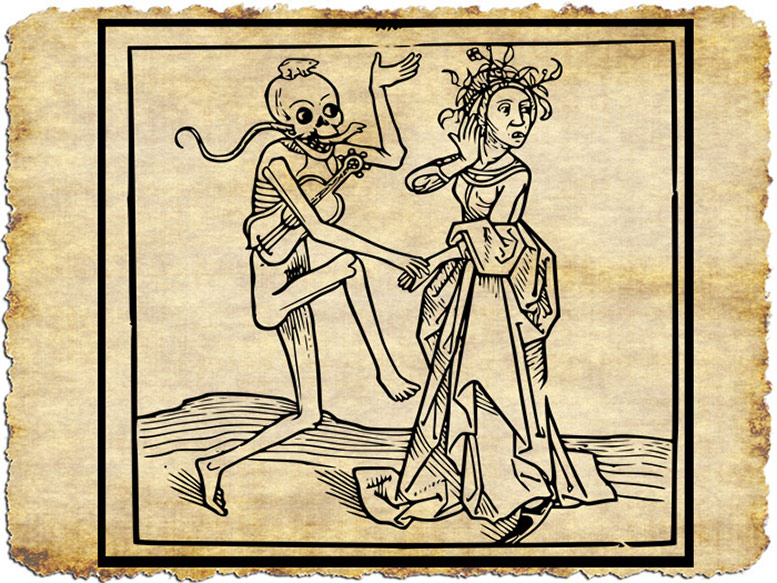
As if a mass bubonic plague wasn’t enough for the inhabitants of London, in the same year the plague ended, in 1666, an event that is remembered throughout history occurred; the Great Fire of London.
The Great Fire started at one o’clock in the morning on Pudding Lane and the wind spread it to other houses made from timber (as most houses were made from timber and had thatched roofs at the time). The fire then reached a warehouse near the Tower of London containing flammable materials like pitch and this transformed it into a raging inferno that destroyed 300 houses in just 2 hours.
Much to the dismay of property owners, the King ordered houses that weren’t burnt to be demolished to create fire breaks but by this time the fire was out of control and had even destroyed the city’s wooden water pipes.
After an investigation, it was found out that it wasn’t just the timber houses that caused the fire to spread as it did since London had a large trading industry at the time, the riverside district was full of warehouses stored with flammable goods like oil, tar, pitch and gunpowder. The fire reached such a high intensity that even the imported steel in the area melted.
The Great Fire of London was so intense that the smoke was even seen from Oxford, The fire destroyed Old St Paul's Cathedral, 87 parish churches, 44 livery company halls, the Royal Exchange (a centre of commerce) and many prisons. Around 100,000 people became homeless after an estimated 13,500 houses were destroyed in the fire and there was a £10 million loss (the equivalent of £1.66 billion as of 2018). Refugee camps were set up at Moorfields and St. George's Fields to Highgate. The most surprising thing about this whole event, however, is that only 16 people are believed to have died in the fire, the reason for this is unknown.
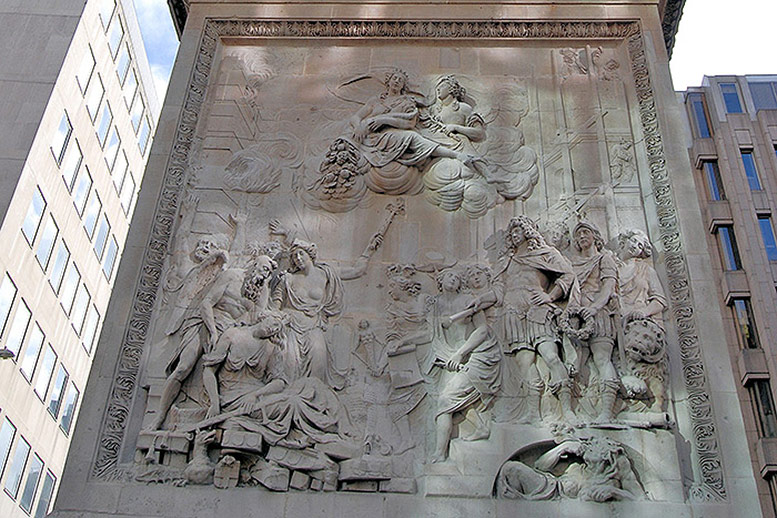
The Rebuilding of London Act 1666 stated that "building with brick [is] not only more comely and durable but also safer against future perils of fire". From then on, all houses had to be built using bricks and only doors and window frames were made from wood. St Paul’s Cathedral and the other destroyed churches were restored and many people moved to the East End looking for work among the expanding docks. The areas, Whitechapel, Wapping, Stepney and Limehouse became heavily populated with the dockworkers and their families, turning them into slums.
In 1694, the Bank of England was founded and the British East India Company was expanding rapidly; Lloyds of London was also founded in the 17th Century. At this time London handled 80% of England's imports, and 69% of its exports and traded with goods like silk, sugar, tea and tobacco which were luxuries at the time.
18th Century London
In 1707, the Act of Union joined the parliaments of England and Scotland together forming the Kingdom of Great Britain (England and Scotland were already ruled by a single monarch but had different parliaments). The restoration of St Paul’s Cathedral was finished in 1708 and was designed by Christopher Wren who completed the work on his birthday; St Paul’s Cathedral is thought to be one of the finest buildings in Britain.
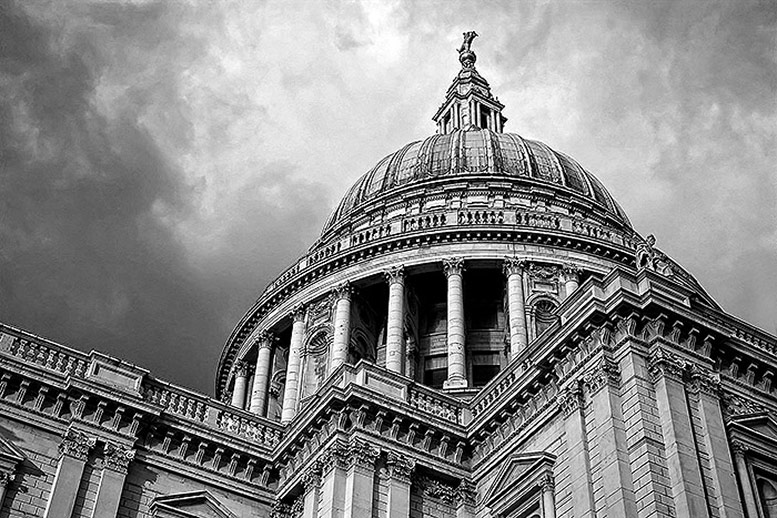
During the 18th century, a wave of immigrants came from other countries who, not only increased the population of London but contributed to the city’s development. Britain also emerged victorious from the Seven Years’ War which expanded the economy by opening many doors for trading with other nations. In 1760, London was the largest city in Europe with a population of 750,000.
Due to areas like Westminster and Mayfair being built up and were considered as well-off areas, many aristocrats moved from the City of London into those areas. Mayfair was full of luxurious townhouses and was part of seven different estates: Grosvenor, Burlington, Berkeley, Curzon, Millfield, Conduit Mead, and Albemarle Ground estates.
In 1738 the areas of Piccadilly and Oxford Street were full of buildings and much congested, unlike Mayfair. Smaller villages that were outside of the original precincts of London were soon incorporated into the growing city, areas such as Bethnal Green, Shadwell, Paddington and St Pancras.
A map of London was made in 1746 by John Rocque; this map was vital evidence that London expanded much out of its former boundaries in the 18th century.
The growing population also meant that infrastructure in London had to be improved to accommodate the increasing amount of commuting. In 1750, the Westminster Bridge was completed providing a second crossing over the Thames which was needed by the influx of people. The New Road was built, between Paddington and Islington in 1756; it was used to drive livestock to Smithfield Market. In 1761, to improve life in the city and remove congestion from the streets, the seven ancient gates were removed from the City of London. Houses from London Bridge were also removed as they were seen as a fire hazard.
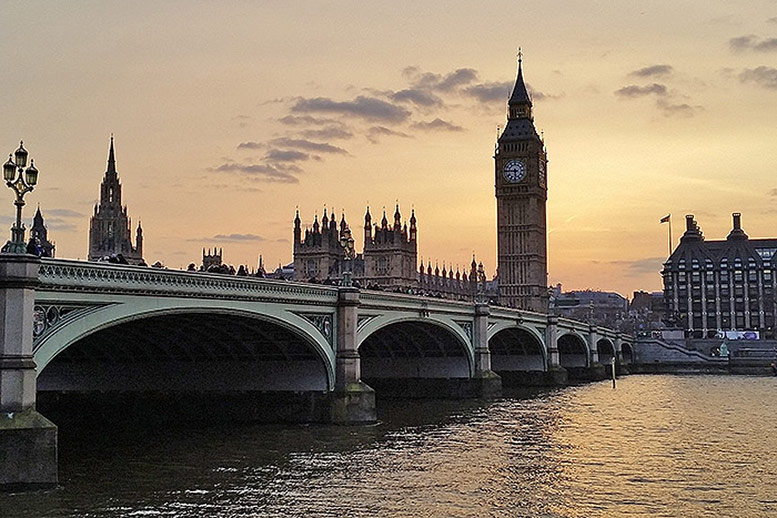
In 1762, King George III bought a building called Buckingham House from the Duke of Buckingham; this house was converted into what is now called Buckingham Palace. Next time you take a stroll through the quaint shops selling London souvenirs, think of the history behind the magnificent architectural structures of the capital that have been replicated into miniature life-like models, maybe you will be tempted to pick one or two up!

Through the Westminster Paving Act of 1765, Parliament dictated that all streets had to be equipped with pavements, draining and lighting in Westminster (things that in modern London, people often take for granted). The success led to more good news for the citizens of London; the London Paving and Lighting Act of 1766 applied these benefits to the whole of London; it also meant that all houses had to be numbered and streets had to be swept regularly.
London had more lighting at the time than any other city in Europe which fascinated visitors from abroad. The Building Act of 1777 put an end to low-quality construction work.
Coffeehouses were a popular place in the 18th century to debate ideas, and the increasing rate of literacy meant that news was more widely available than before.
Population growth also meant an increase in the crime rate, especially in slum areas. In 1750, the Bow Street Runners were established, London’s first professional police force. Public hangings were also common at the time. 285 rioters were killed in the Gordon Riots of 1780, they were Protestants who were rioting against Roman Catholic emancipation.
In 1787, a large group of freed slaves left London and established Freetown in Sierra Leone. The American colonies broke away from the British Empire in the 18th century.
19th Century London

From 1825, London was the largest city in the world and functioned as a major port for international commerce; it became the capital of the British Empire. Even though London became fabulously rich since it was the centre of world trade at the time, millions of people lived in slums and suffered from poverty. Charles Dickens’s Oliver Twist, published in 1837, preserved this period forever; the book is an English classic and is still studied in schools today along with Dickens’ other works.
In 1829, after a heavy increase in crime, the Home Secretary and soon-to-be Prime Minister, Robert Peel, formed the Metropolitan Police, which was a police force designed to operate in the whole of London (this led to the common nickname for a policeman to be bobby or peeler, after Robert Peeler).
The first London railway went from London Bridge to Greenwich and was completed in 1836; but soon after, the great railway termini were developed giving London access to areas all over Britain. The first lines of the London Underground were constructed in 1863. With the new railways in use, richer people began to migrate to suburban areas with more spaces leaving the poor in the cramped city areas.
The Great Stink
London was growing faster than ever at the time and the local parishes, who administered individual districts, could not cope with the rise in population and its requirements. In 1855, an organisation called the Metropolitan Board of Work was founded to manage the infrastructure in the growing city, and their first task was to deal with London’s lack of sanitation.
Sanitation in London in the 19th century was extremely poor with raw sewage being pumped into the River Thames and this led to the Great Stink of 1858. Although the Great Stink may sound humorous, it was a terrible disaster where the hot summer weather enhanced the smell of human waste from the river and at the time, the bad air was thought to carry diseases. Three previous outbreaks of cholera were blamed on the dirty river.
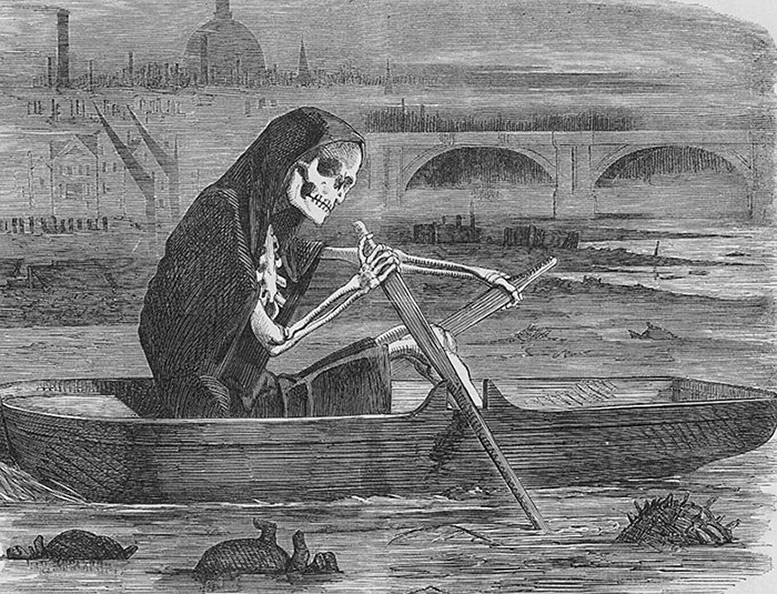
The engineer Joseph Bazalgette proposed his idea to the London authorities; he wanted to build a series of sewage pipes that would pump the waste outside of the urban area and not onto the banks of the Thames. His proposal was accepted and by 1866 most of London had sewer pipes designed by Bazalgette who is considered as a hero; he is also considered as the Victorian official who saved the most lives. In the same year, however, there was an outbreak of cholera in the East End that killed 5,596 people, between Aldgate and Bow; an interesting point to note was that this area hadn’t had Bazalgette’s pipes constructed (but the East London Water Company had also dumped their waste too close to this area by accident). The sewage system designed by Joseph Bazalgette reduced the number of deaths and diseases in London; the system is still in use today.
The Great Exhibition of 1851 was held at the Crystal Palace (it was built from glass sheets and resembled a massive glass palace, once located in Hyde Park however it is no longer there as it was destroyed in a fire) and attracted more than 6 million visitors from around the world, it was a display of Imperial dominance and many people were awestruck by it.
Since London was seen as the glorious capital of the British Empire, it is no surprise that it attracted a wave of immigrants from the colonies. 20% of London’s population at the time were Irish refugees who escaped from the Great Famine lasting from 1845 to 1849; there was also a large Jewish community that mostly consisted of wealthy merchants.
In 1888, the Metropolitan Board of Works was replaced by the County of London and was administered by the London County Council. The County of London was the first administrative board to work London-wide and consist of elected employees, the employees at the Metropolitan Board of Works were appointed not elected. In 1900 however, the county was divided into 28 metropolitan boroughs allowing more local administration.
From 1888 to 1891 the world-famous murders of the notorious Jack the Ripper took place in Whitechapel in the East End. Also known as the Whitechapel Murderer or Leather Apron, Jack the Ripper killed and mutilated five female prostitutes. The case became so famous because although Jack the Ripper wasn’t the first serial killer, he was the first to receive so much media coverage as newspapers were cheaper and more widespread during this time; also, he was never caught, surrounding the story in mystery.

The late 19th century was also known as the Victorian era. Queen Victoria, who ruled from 1819 to 1901, was the longest-reigning British monarch (after Elizabeth II) and brought much cultural and industrial expansion to the British Empire. Much of London’s infrastructure improved during her reign, although London was still a dirty and over cramped place. She also abolished slavery and improved education and science facilities in London.
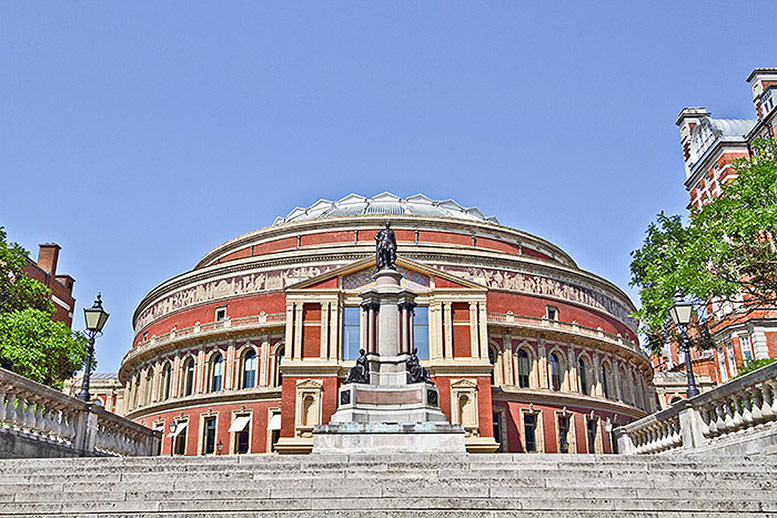
Many famous buildings were also built in the 19th century such as:
- Trafalgar Square (1805)
- Big Ben and the Houses of Parliament (1843)
- The Victoria and Albert Museum (1852)
- The Royal Albert Hall (1871)
- Tower Bridge (1886)
20th century London
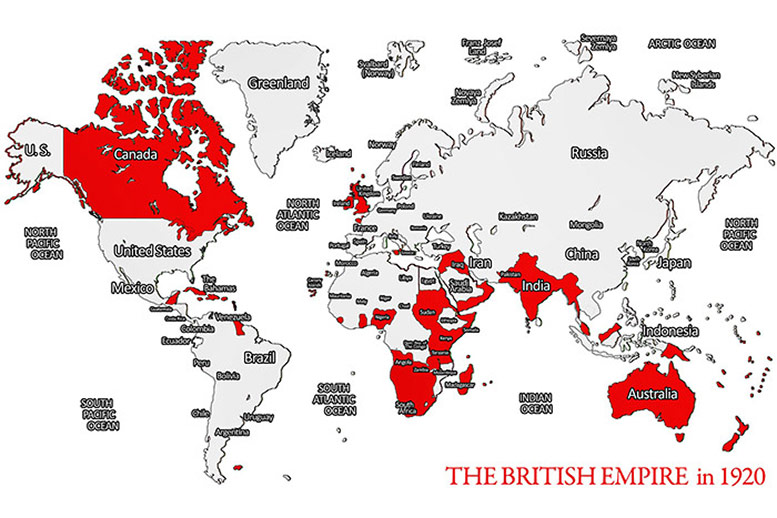
At the start of the 1900s, London was the heart of the biggest empire in history and had much going on. In 1900 one out of five Britons lived in London and by 1911 the population of the city was 7 million.
London hosted their first Olympic Games in 1908 which was originally scheduled to be in Rome, but a volcano erupted there so London was chosen.

During these early years of the 19th century, Emmeline Pankhurst led the suffragette movement with London being the main place for demonstrations. 250,000 people protested in Hyde Park in 1908 and 1910, on the day known as Black Friday, a suffragette march from Caxton Hall to the Palace of Westminster, ended with conflicts with the police that led to 2 deaths.
London was very cramped at the time, especially in the East End where one-third of the 900,000 inhabitants lived in poverty; people were so poor at the time that during the Second Boer War (1899 - 1902) 7 out of 9 people working-class people in London were unfit for service in the army.
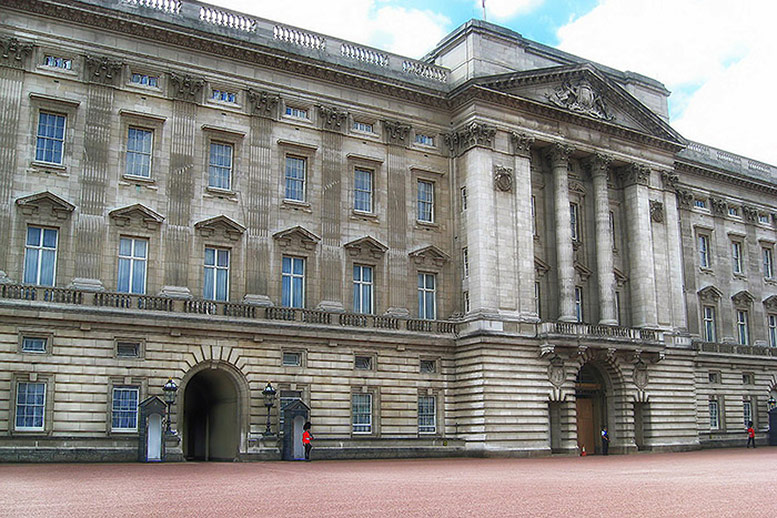
In 1911 the Victoria Memorial was built and there were many other architectural improvements to London too, Buckingham Palace was re-faced, Regent Street and Oxford Circus’ old buildings were replaced with new commercial ones, and other buildings such as the County Hall, War Office and Port of London Authority Building were built during this time.
The Mall also began to be used as a grand parade route and the Admiralty Arch was built in the same year.
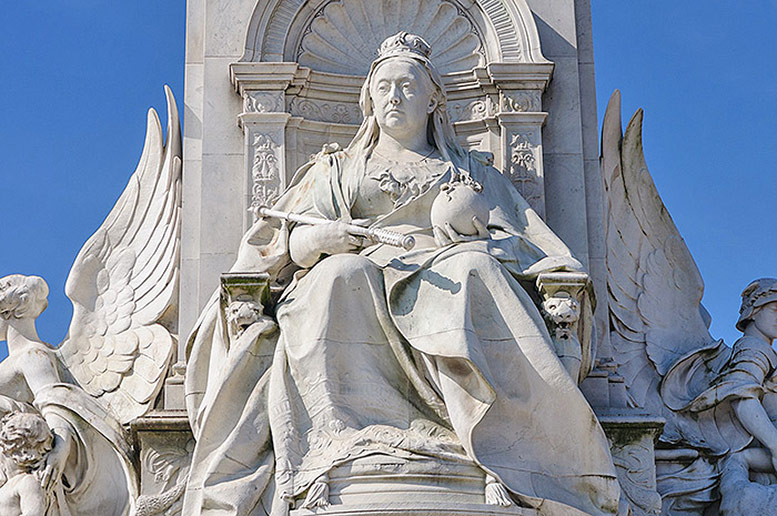
A slum known as Clare Market in Holborn was demolished to develop the Kingsway, a boulevard with an underground tramway that goes from The Strand to High Holborn and Southampton Row. The road Aldwych was lined with hotels and theatres; and the Australia House, a diplomatic commission was also built there.
There is no doubt that the early 20th century held many exciting changes for the people of London, but some changes, which were soon to come, were not exciting at all.
On 28 June 1914, Archduke Franz Ferdinand was assassinated, and in short; World War One began.
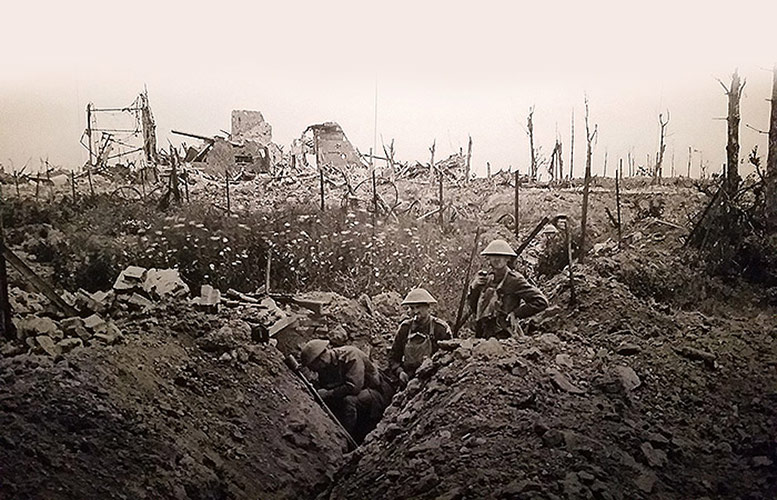
In 1915, London experienced its first aerial bombardment from German Zeppelin airships, the bombs were dropped in the East End killing seven people.
By 1917 the British were able to shoot down the zeppelins provoking the Germans to start using bomber aeroplanes, (although a single bomber had attacked the East End before in 1916) so in this year 14 Gotha biplanes bombed various places in the City and the East End including a school (Upper North Street School in Poplar) where 18 children were killed. This was the largest air raid on London in World War I and resulted in 160 deaths, but in 1918 the Germans stopped the air raids due to heavy losses inflicted on them by the British.
The biggest explosion in London’s history also happened at this time, the Silvertown Explosion where a munitions factory containing 50 tonnes of TNT, in West Ham, blew up killing 73 people and injuring a further 400 more.
The total of deaths of Londoners from the German air raids was 670 and a further 1,960 were injured. A greater shock for the inhabitants of London was that 124,000 Londoners serving in the army never returned from the war.
In the years after World War I, London’s urban area grew at its fastest rate than ever before expanding well out of the County of London boundaries, the County proposed a new administrative board for the whole of Greater London but this was rejected by the government in 1921.
The Great Depression of the 1930s affected London’s population and there were a huge number of unemployed people especially in the East End.
The Battle of Cable Street took place in 1936 and was a clash between the police protecting a demonstration led by the British Union of Fascists and the anti-fascist demonstrators leading to around 175 injuries.
At the time people, those who could afford it preferred to live in suburban areas where the air was clean, this led to many people moving past the boundaries of London into areas like Essex and Kent. The Metropolitan Green Belt was introduced to stop the loss of the countryside and restrict urban growth. By 1939 8.6 million people were living in London.
The inhabitants of London were terrified of the aerial bombings they faced in the First World War, but this was nothing compared to what was to come in World War II which began in 1939. The German Air Force, the Luftwaffe, targeted London extensively as part of the Blitz. Before the bombings, hundreds and thousands of children were evacuated and saved from the deadly raids; remaining citizens had to hide in air raid shelters built in the back gardens of houses. In total, there were 71 air raids between 1940 and 1941, afterward the raids were less intense when Adolf Hitler focused his attention on the Eastern Front after failing to defeat Britain.

Towards the end of the war in 1944 - 45, pilotless rockets known as the V-1 and V-2 were developed and launched at England from Nazi-occupied territories; this was known as the Baby Blitz or its official name, Operation Steinbock. 2,419 of the V-1 rockets reached London killing 6,184 people and injuring 17,981. Later in the year, the V-2 rockets, which were bigger and more dangerous, were launched killing 2,754 civilians in London with another 6,523 injured; the area of Croydon suffered from the pilotless rockets the most.
30,000 people were killed in the air raids over London and 50,000 were injured, hundreds of thousands of people were left homeless after many tens of thousands of buildings were destroyed; the Docklands area was subjected to the brunt of the bombings. The destruction was catastrophic and the likes of it had never been seen in London before or since. To protect the culture and important features of London, historic buildings were sandbagged and had designated fire crews, furthermore, valuable items from museums and other documents were taken from London to other areas.
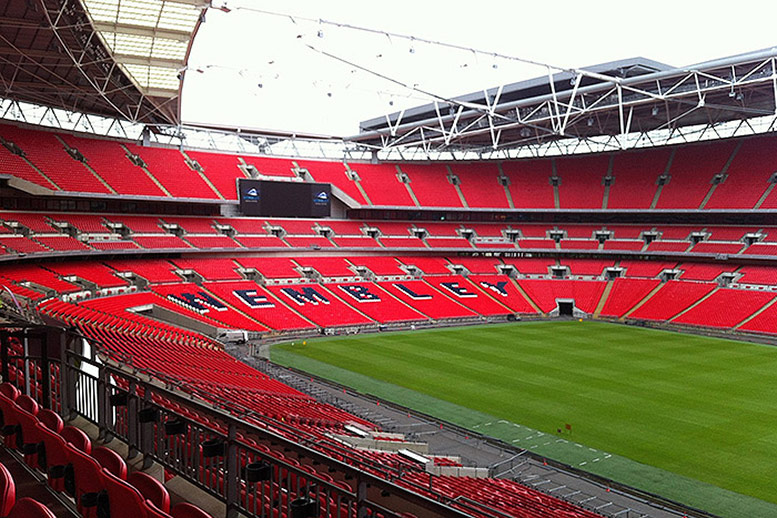
Three years after the Second World War, the 1948 Summer Olympics were held in Wembley Stadium and the Festival of Britain in 1951 lifted people’s moods after a depressing period during the war. In the 1950s and 60s tower blocks were built as a solution to the lack of housing as many homes were destroyed by the bombing.
Since most people heated their houses with coal in the 50s, London was enshrouded in thick smog leading to the Great Smog of 1952 which lasted for five days and led to 4,000 deaths. The Clean Air Act of 1956 created smokeless zones which helped the problem.
From the 1950s onward, the rise of immigrants moving to London made it the most diverse city in Europe, these people mainly came from Commonwealth countries like Jamaica, India, Bangladesh and Pakistan. Tensions due to mass immigration led to the Brixton Riots in the 80s.

In the 1960s London became a home of the Swinging London subculture and attracted many youths to areas like Carnaby Street; London continued being a centre for youth culture in the 80s with the new wave and punk cultures and even into the 90s with the Britpop culture.
London became a target for terrorist attacks by the Irish Republican Army (IRA) throughout the 70s to the 90s.
In 1965 the County of London was abolished and Greater London, administered by a new Greater London Council was established along with 32 London boroughs formed from the older metropolitan ones.
After World War II, London’s population decreased from 8.6 million in 1939 to around 6.8 million in the 1980s, but since the 80s it began to increase again after receiving a much more positive image. London also lost its function as a major port when the Docklands could not accommodate modern container ships so the ports of Felixstowe and Tilbury started to be used more. The Docklands area then remained unused until the 80s when flats and offices were built there.
The Greater London Council was abolished in the 80s after a government dispute and London became the only metropolis without central administration. The Greater London Authority was then established by Tony Blair’s government in the year 2000.
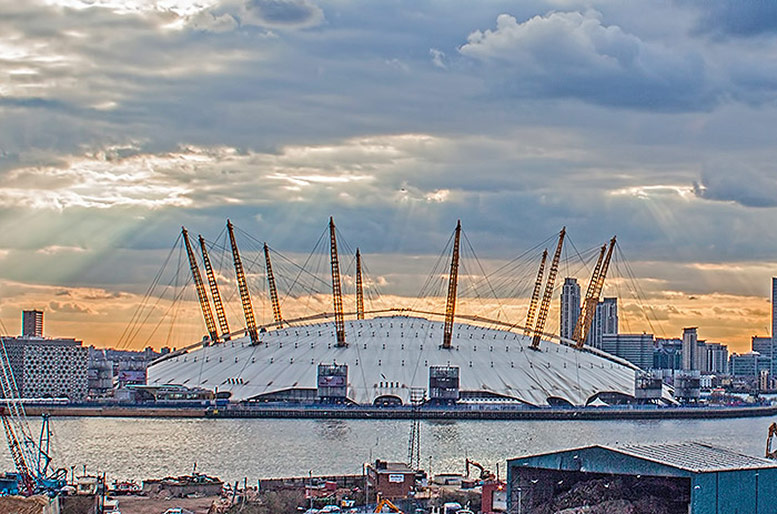
Also in 2000, the Millennium Dome in Greenwich was constructed and the London Eye or Millennium Eye (which opened on the last day of 1999) was completed and continues to attract four million visitors a year.
In 2011 a countrywide riot was started in London after Mark Duggan was shot dead by the police in Tottenham, shops all over the country were looted and 5 people were killed.
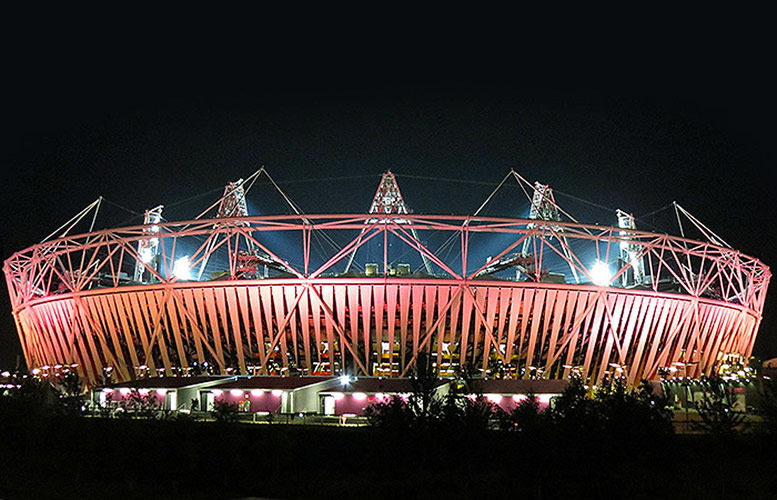
In 2012, London hosted the 2012 Summer Olympics in Stratford, Newham; making it the first city to host the modern games 3 times.
London history is a popular topic for debates and discussions, as well as a well-liked subject amongst students. We hope that this post has given ample insight into the topic of London's history and that it will help people with furthering their research and learn more about the historical facts of the British capital.

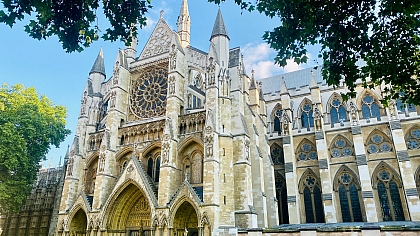
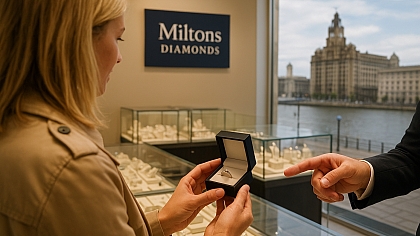
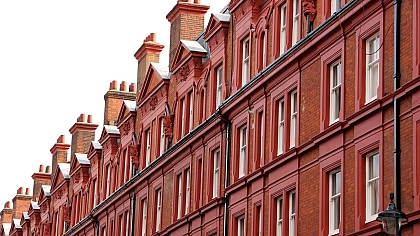
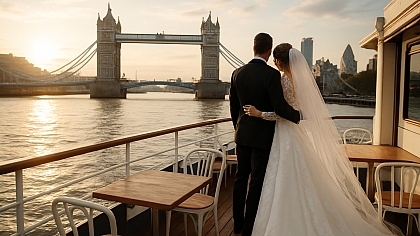
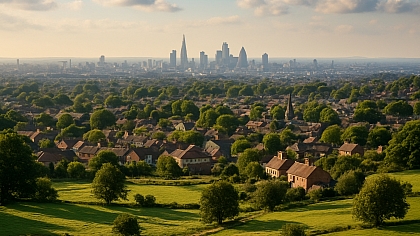
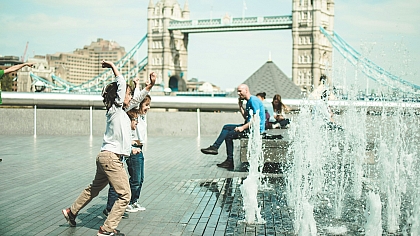
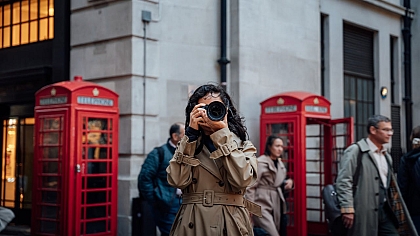
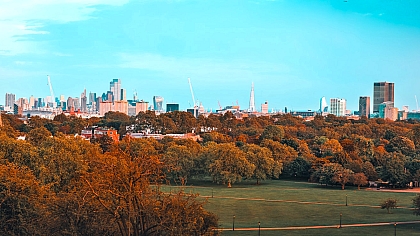
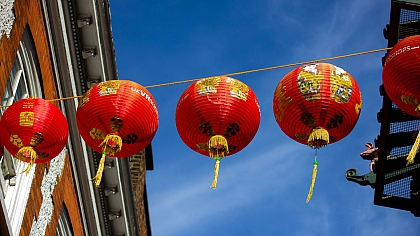
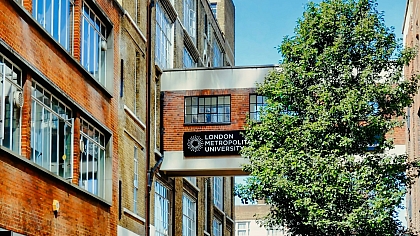
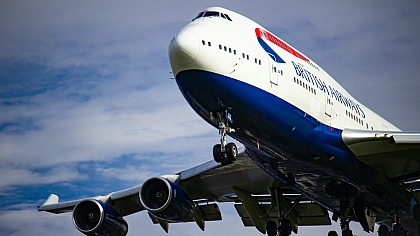
COMMENTS
Oooo wow so interesting
Very in depth thanks
It is very interesting and it helped me do han esey that I had to do but in my opinion i think you shoul hadmore thing about the new days not so much romans but it is vey good. Thanks
откуда взята эта информация (мне нужно это знать для моей работы кто автор этой информаций)?